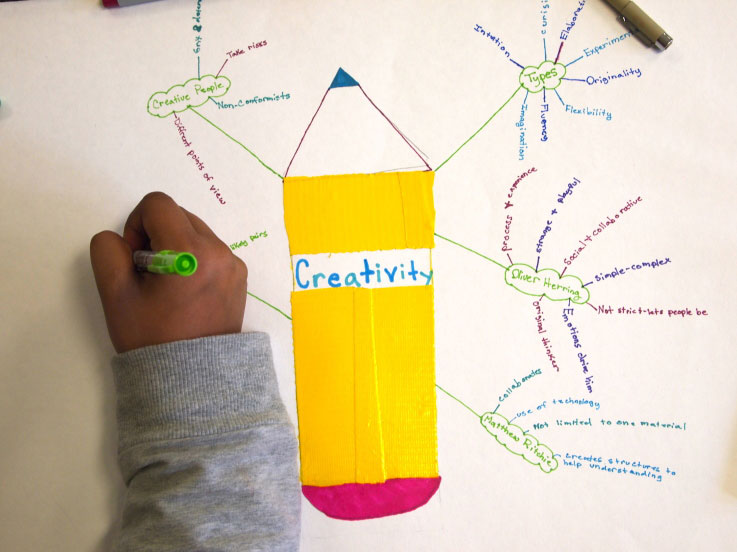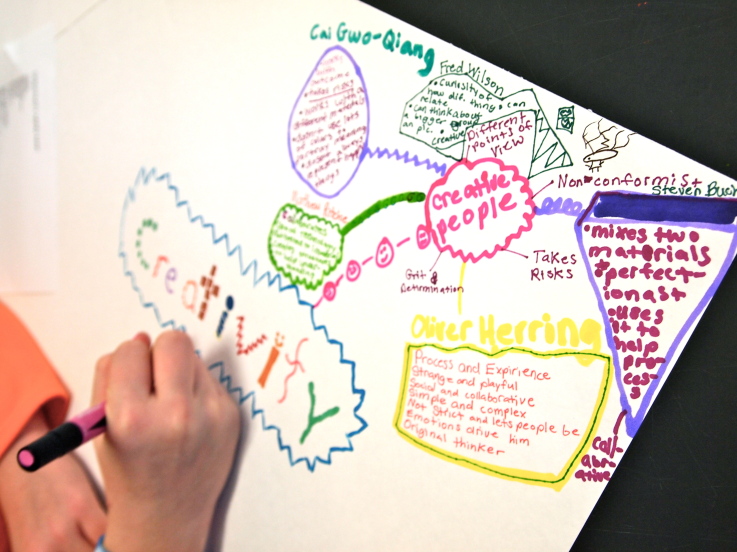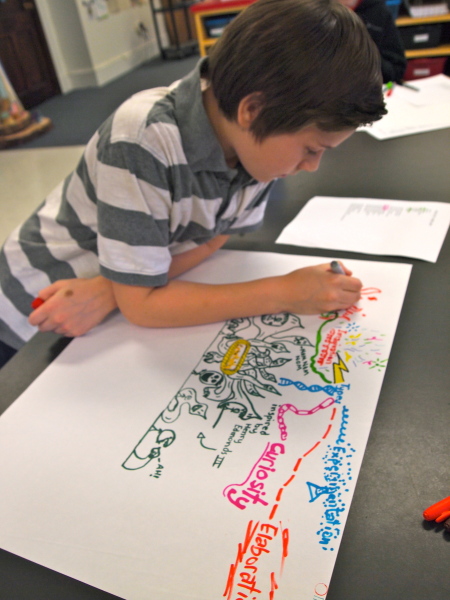
Mind Map in progress. Photo courtesy of the author.
This creativity exercise is intended to engage students in a classroom setting, but it can be completed in the notebook of any lifelong learner to help you create mental links between ideas. I struggled a bit at the start of the year with how to have students keep track of conversations, concepts, and their own reflections, and making Mind Maps gives them a chance to start making art right away while processing new ideas.
Mind Maps only require paper and colored writing utensils, but the first thing you’ll need is a central word for your students to branch their ideas off of. Since I teach art to kindergarteners through 6th graders, our word was creativity, but this activity can be adapted to fit the needs of any classroom.
A science class for example, might choose the word discovery or analysis, while a literature or language arts class can use words like description, narration/story telling, or rhythm if poetry is the subject at hand. Other good words that can be used more generally are imagination and inspiration.
Once you’ve decided on the word you’d like your students to consider in relationship to your class’ curriculum, you’re ready to pass out the paper, markers, plus any other kind of art-making materials and begin the exercise:
Step 1: Draw the center word in a way that expresses what that word means to you. Whether “creativity” is represented as a pencil, computer, or through creative letters, draw that word in the very center of your paper.
Step 2: Think about what makes “creativity” creative. Where does creativity come from? Where can you go to find it? What kinds of people are known for it? Who do you admire for their creativity? Write these thoughts down as smaller sections that branch off of your center word. Draw or write these smaller branches in a way that’s creative too!
Step 3: Now think about each of these smaller branches on their own. Think about examples you’ve seen or heard about and write these down as even smaller parts that branch off even farther. If you wrote down “Picasso” as a smaller branch, think about which aspects of Picasso’s artwork makes it so creative.
*At this point, the opening part of the activity is complete. In my art classes, each time we finish a new section of the curriculum, we return to our Mind Maps and the students make additional branches based on what they’ve learned:
Step 4: Now that we’ve just finished learning about how _______ uses creativity, give him/her/it their own branch on your Mind Map, and write down the ways they found and expressed their creativity in even more branches.
This activity is a great way for students to keep track of conversations, concepts, and their own reflections. My students really enjoy the freedom to come up with their own ideas and use of materials. Plus, Mind Maps are great for me as an educator because I can see if my students are struggling with a concept, or if they’re fluent in it with a quick visual check.
Share your experiences using this activity in the comments below!






